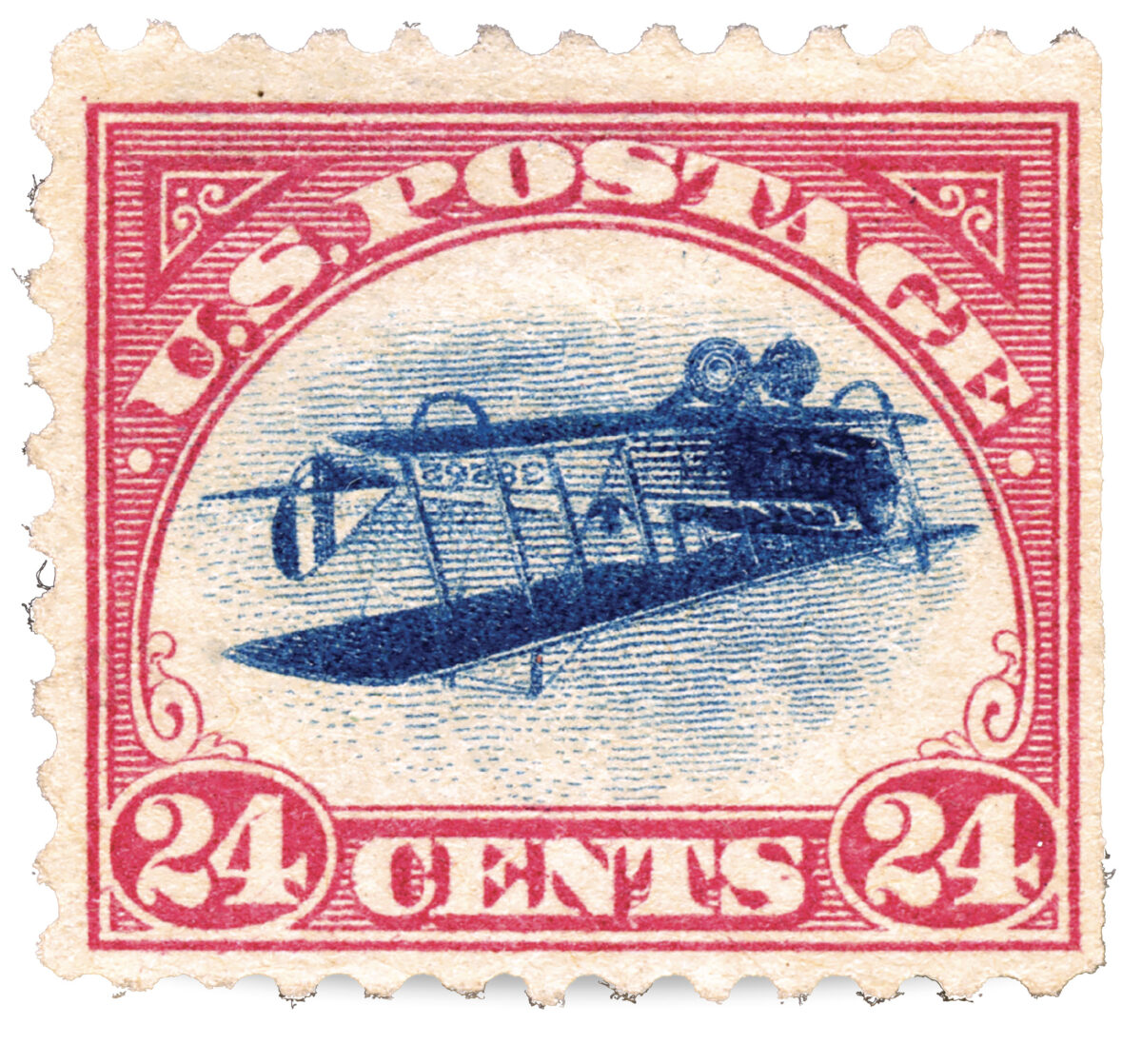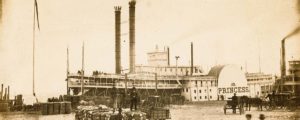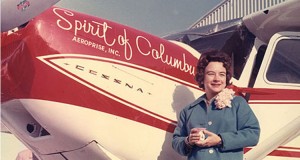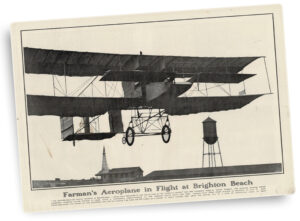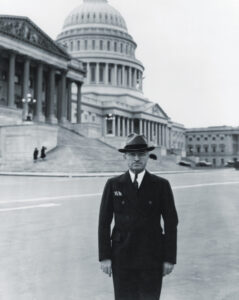On November 8, 2023, collector Charles Hack paid more than $2 million for a postage stamp. It was not just any stamp—it was an example of the famous “inverted Jenny” issue from 1918. The stamps were intended to celebrate the start of airmail service in the United States, but the Curtiss JN-4 Jenny was accidentally printed upside down on some of the sheets. One sheet with 100 stamps escaped the postal service’s recall, and those stamps became a holy grail for collectors. Hack, in fact, had previously purchased two, but his most recent acquisition was the only one of the 100 still unaccounted for when it emerged in 2018. It had been stored in a safe-deposit box for a century and was in mint condition. Hack tried to buy it then, but his bid fell short. That wasn’t the case this time.
With the inverted Jenny, it was the mistake, not the airplane, that made the stamp so alluring. But airplane buffs who want to collect stamps featuring airplanes—while spending less than $2 million doing so—will find no shortage of specimens from around the world and featuring a wide variety of airplanes.
The world’s first postage stamp to feature a flying machine was issued by the United States in January 1913. That 20-cent stamp depicted what appears to be a Wright 1909 military flyer. The stamp was one of a set intended to celebrate the regular delivery of packages to both urban and rural addressees, thus introducing the concept of mail order to American consumers. The stamp bore the inscription “Aeroplane Carrying Mail” five years before the U.S. Postal Service inaugurated official airmail services.
Outside the United States, many countries have marked the anniversaries of historic aviation events with stamps. These have included the anniversary of the first powered flight of a human-carrying airplane by the Wright brothers, the beginning or end of various world conflicts or the progress of science or engineering that enabled the technology we have today. The countries of origin sometimes seem unconnected to the aircraft or events depicted on the stamps. Some smaller countries expressly issue high volumes of new stamps each year, less for the purpose of carrying their mail than to generate revenue from sales to stamp collectors. However, most have some affiliation through prior colonial or trade links with the country in which the historic event took place, or they commemorate flights or airplanes of worldwide significance, such as Louis Blériot’s pioneering flight across the English Channel in 1909 or Charles Lindbergh’s 1927 New York-to-Paris flight in the Spirit of St. Louis, which has graced stamps from countries as widespread as Nicaragua, Samoa and Niger.
The examples here demonstrate the wide range of aviation stamps—and they are available at reasonable prices.
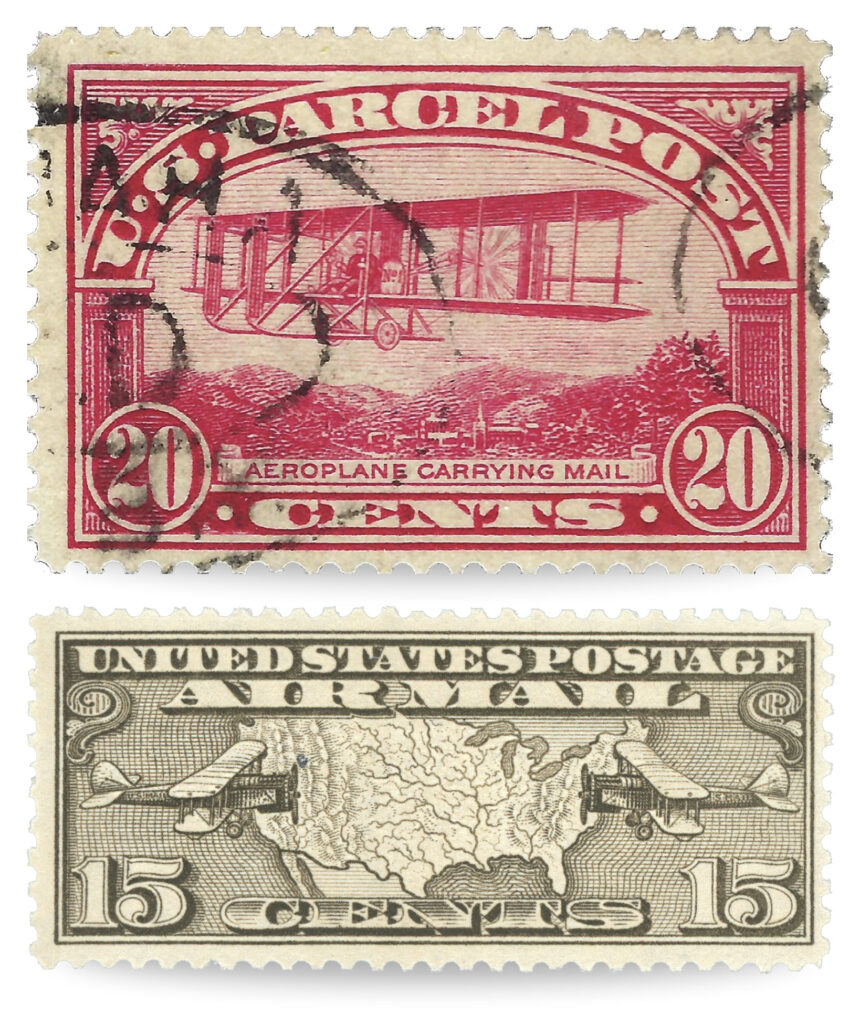
Top: In 1913 the first postage stamp to feature an airplane depicted a Wright military flyer. Above: The de Havilland DH-4, featured on this stamp, was used as a mail carrier. (Top: Courtesy Gerry Frazier; Above: Guy Aceto Collection)
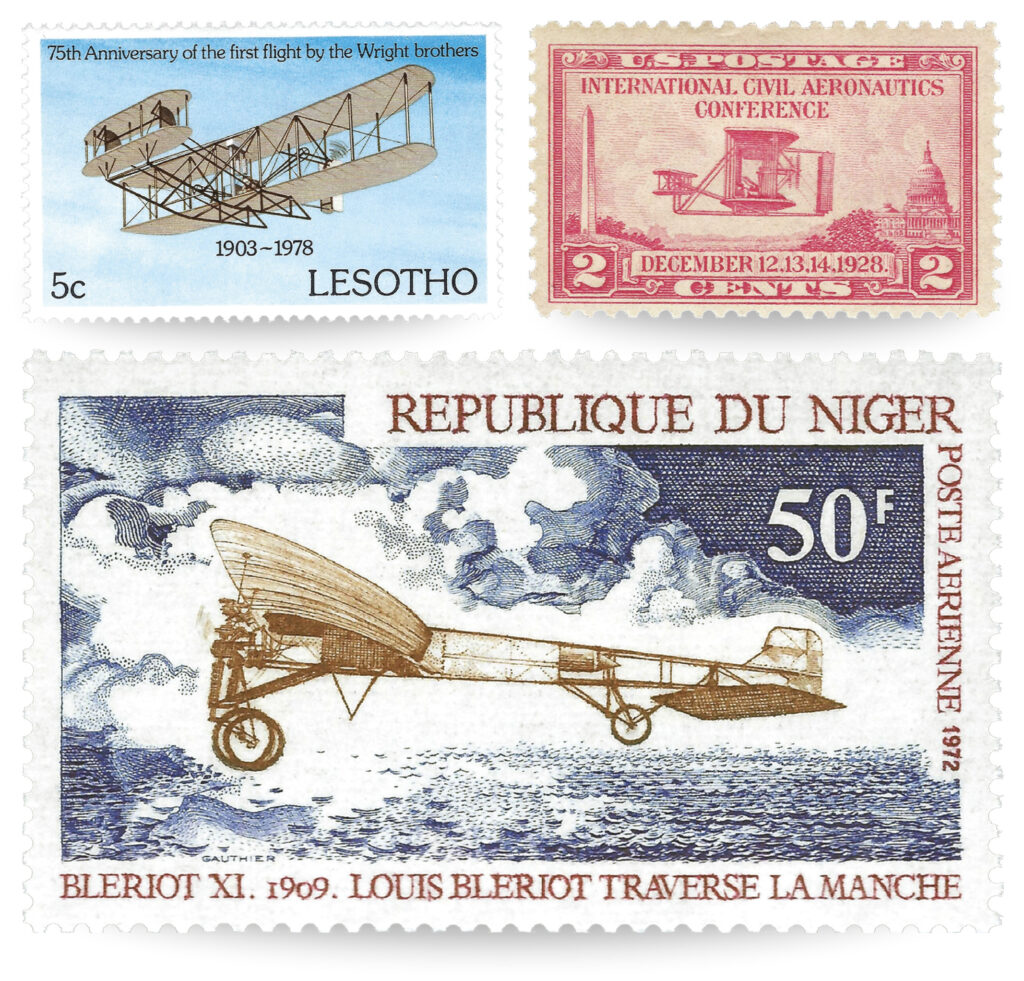
Airplanes, including Wright flyers (top, left and right) and the Blériot XI, have been a staple on stamps, as these examples demonstrate. (Courtesy Gerry Frazier)

Top: This 1941 U.S. air mail stamp depicts an airliner that never actually existed. It’s an amalgamation of at least three different airplanes, evidently designed so the post office wouldn’t appear to be playing favorites in its choice of airplane manufacturers. Above: The postal service had no such qualms with this stamp from 1947, which features a Boeing 377 Stratocruiser soaring over the San Francisco-Oakland Bay Bridge. (Courtesy Gerry Frazier)
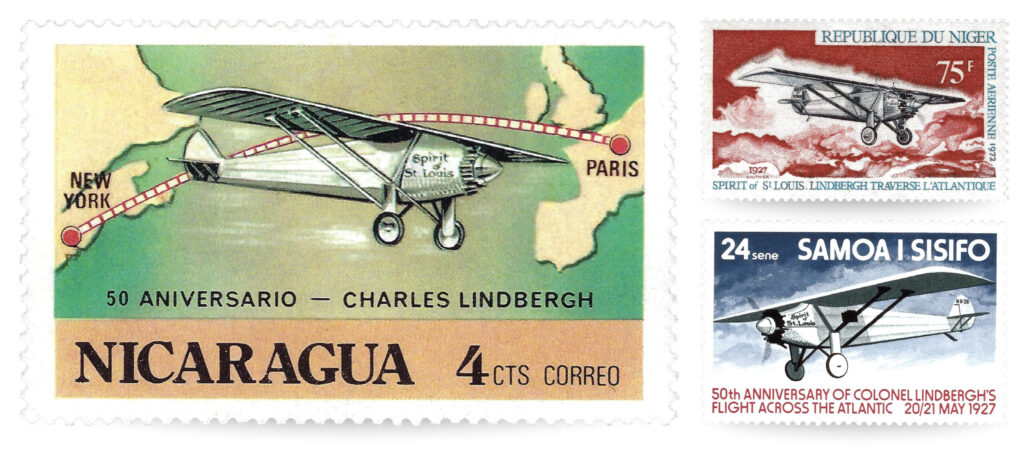
Three stamps from three different countries commemorated Charles Lindbergh’s 1927 solo transatlantic flight from New York to Paris. (Courtesy Gerry Frazier)
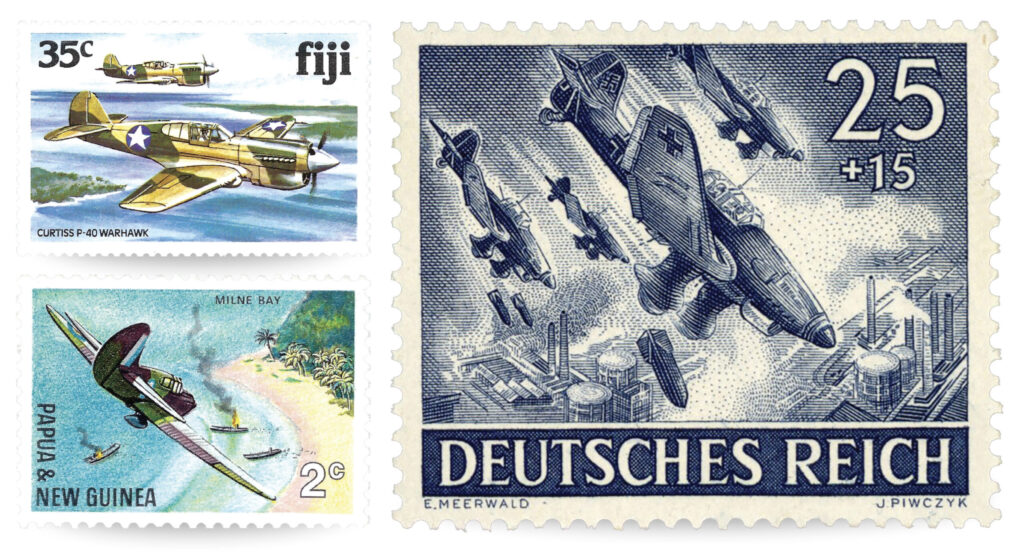
World War II aviation has provided inspiration for many stamps. Left: Curtiss P-40 Warhawks appeared on issues from Fiji in 1981 (top) and Papua New Guinea (bottom) in 1967. Right: The Junkers Ju-87 Stuka made an appearance on a 1943 stamp from Nazi Germany. (Left, both: Courtesy Gerry Frazier; Right: Guy Aceto Collection)
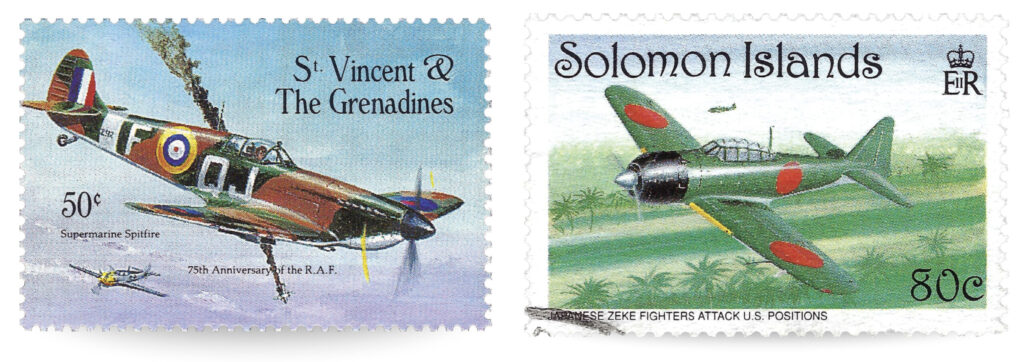

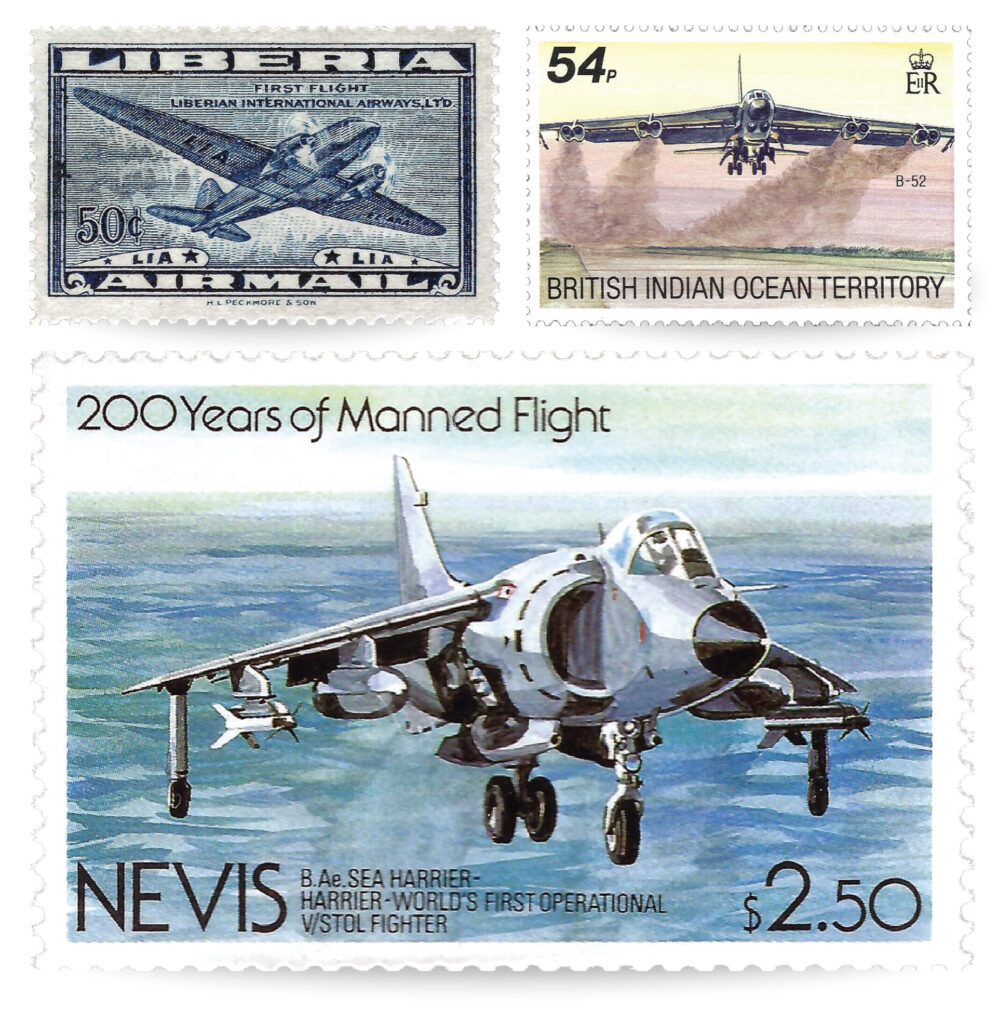
Stamps can provide a quick overview of the airplane’s development over the decades. Top left: In 1948 Liberia celebrated the first flight on its national airline with this Douglas DC-3 stamp. Top right: One of the islands of the British Indian Ocean Territory is Diego Garcia, a joint British/American base that often hosts the Boeing B-52 Stratofortress pictured on this 1992 stamp. Above: In 1983 the Caribbean island of Nevis issued a series of stamps to commemorate the two centuries of manned flight that began with the balloon ascent of Jean-Francois Pilatre de Rozier and Francois Laurent on November 21, 1783. Nevis’s choice of the British Aerospace Sea Harrier for one of the stamps shows how far aviation had progressed over those two centuries. (Courtesy Gerry Frazier)
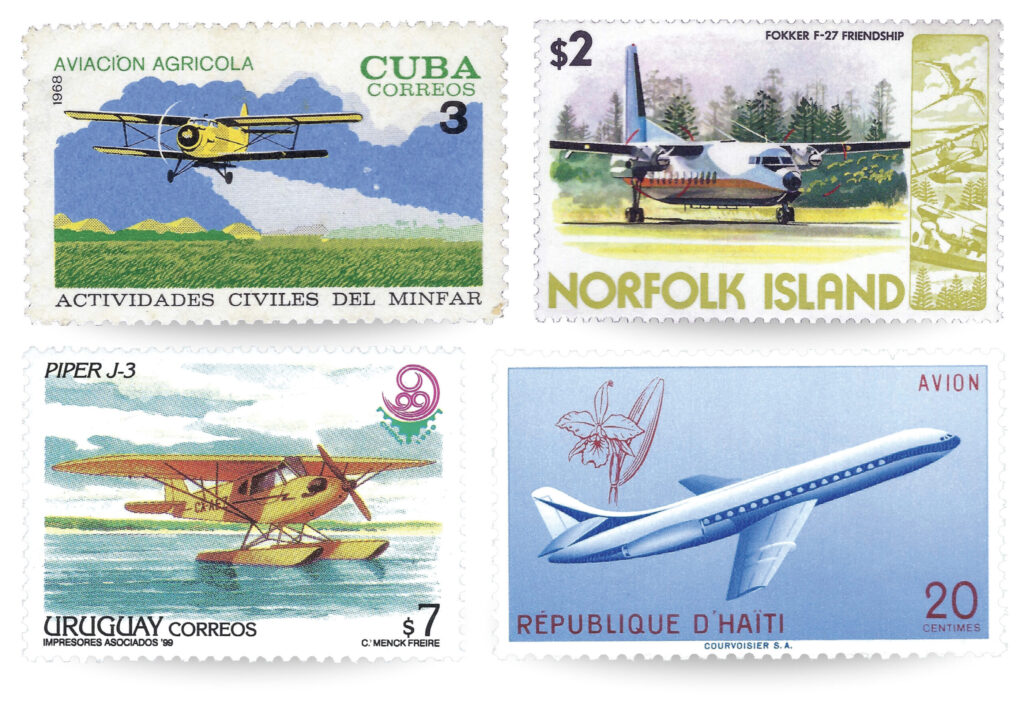
Airplanes don’t necessarily have to be famous or important historically to get featured on a stamp. Top left: Cuba celebrated the proletarian task of cropdusting with this 1968 stamp that featured an Antonov An-2. Top right: In 1980 Australia’s Norfolk Island honored the Fokker F-27 Friendship, one of the tiny island’s links to the outside world. Bottom left: In 1999 Uruguay issued a stamp that depicted a float-equipped Piper J-3. Bottom right: Haiti put a Sud Aviation Caravelle on a stamp in 1960. (Courtesy Gerry Frazier)
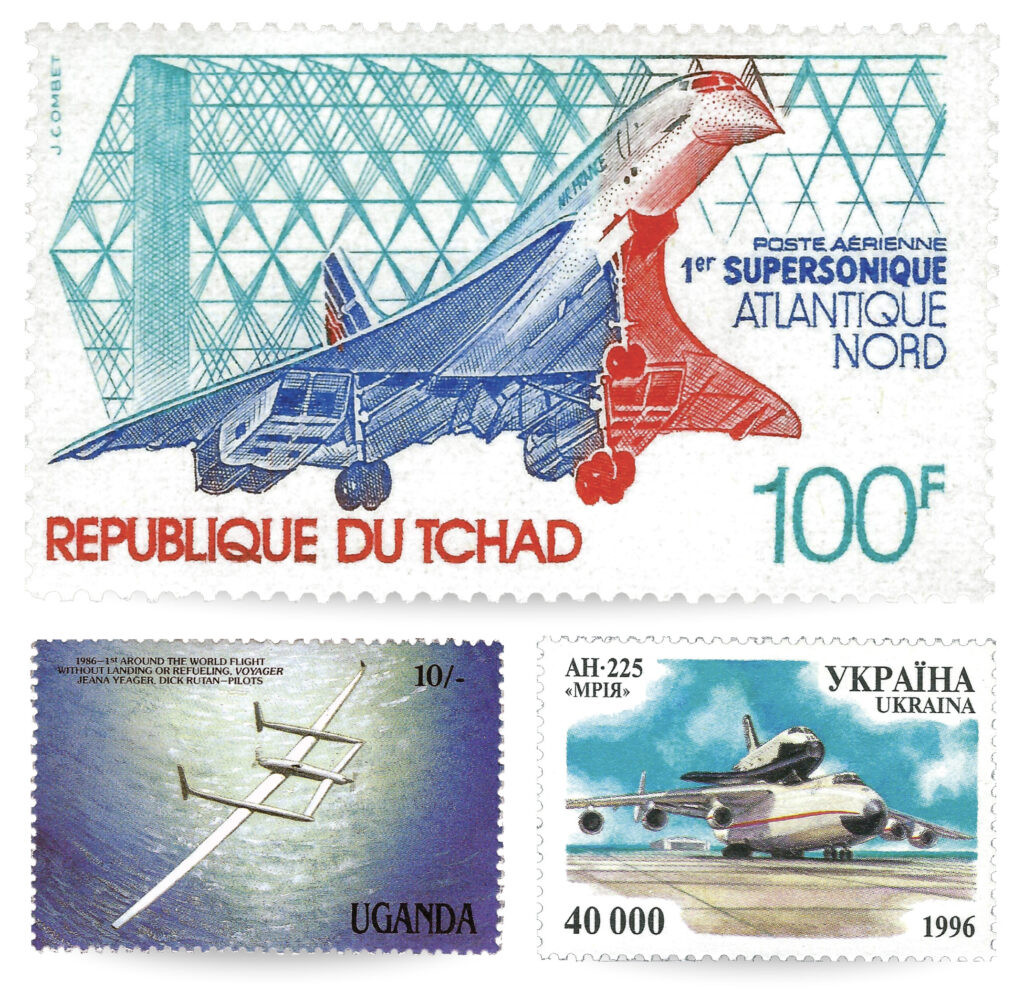
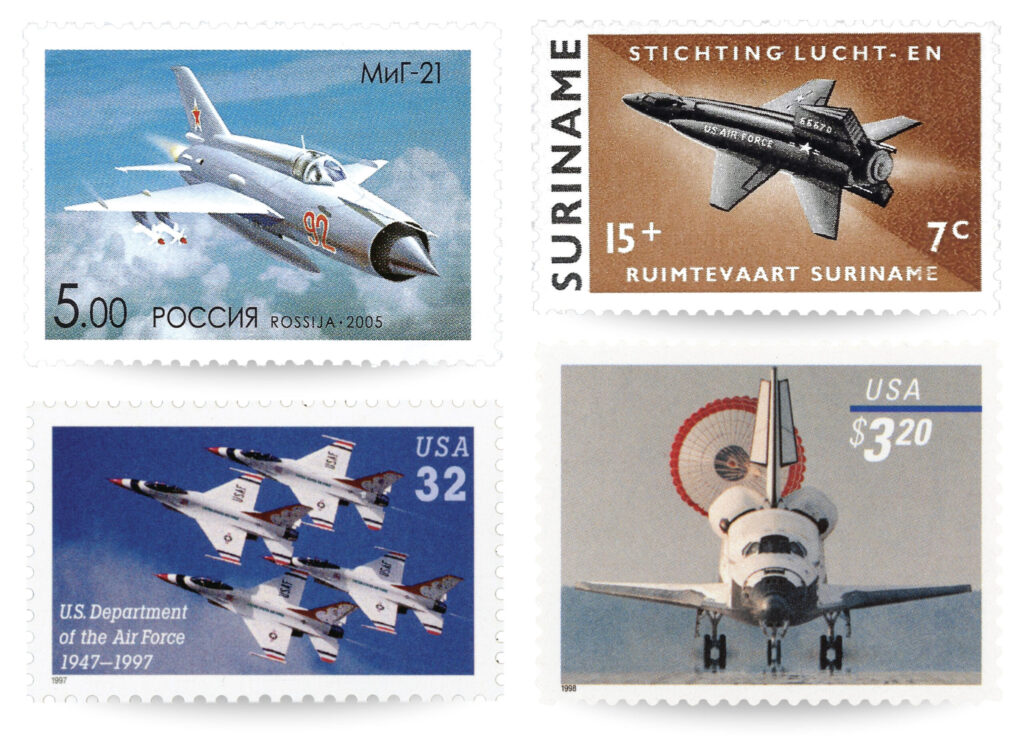
Top left: The Soviet Union’s MiG-2 first flew in late 1957 and got stamped in 2005. Top right: The rocket-propelled North American X-15 reached the edges of space as it set records in the 1960s and appeared on a stamp from Suriname in 1964. Above left: A salute to the 50th anniversary of the U.S. Air Force in 1997 featured the Thunderbirds aerobatics team. Above right: The U.S. Space Shuttle, which made its first orbital flight in 198, got a stamp in 1998. (Top, both: Courtesy Gerry Frazier; Bottom, both: Guy Aceto Collection)

